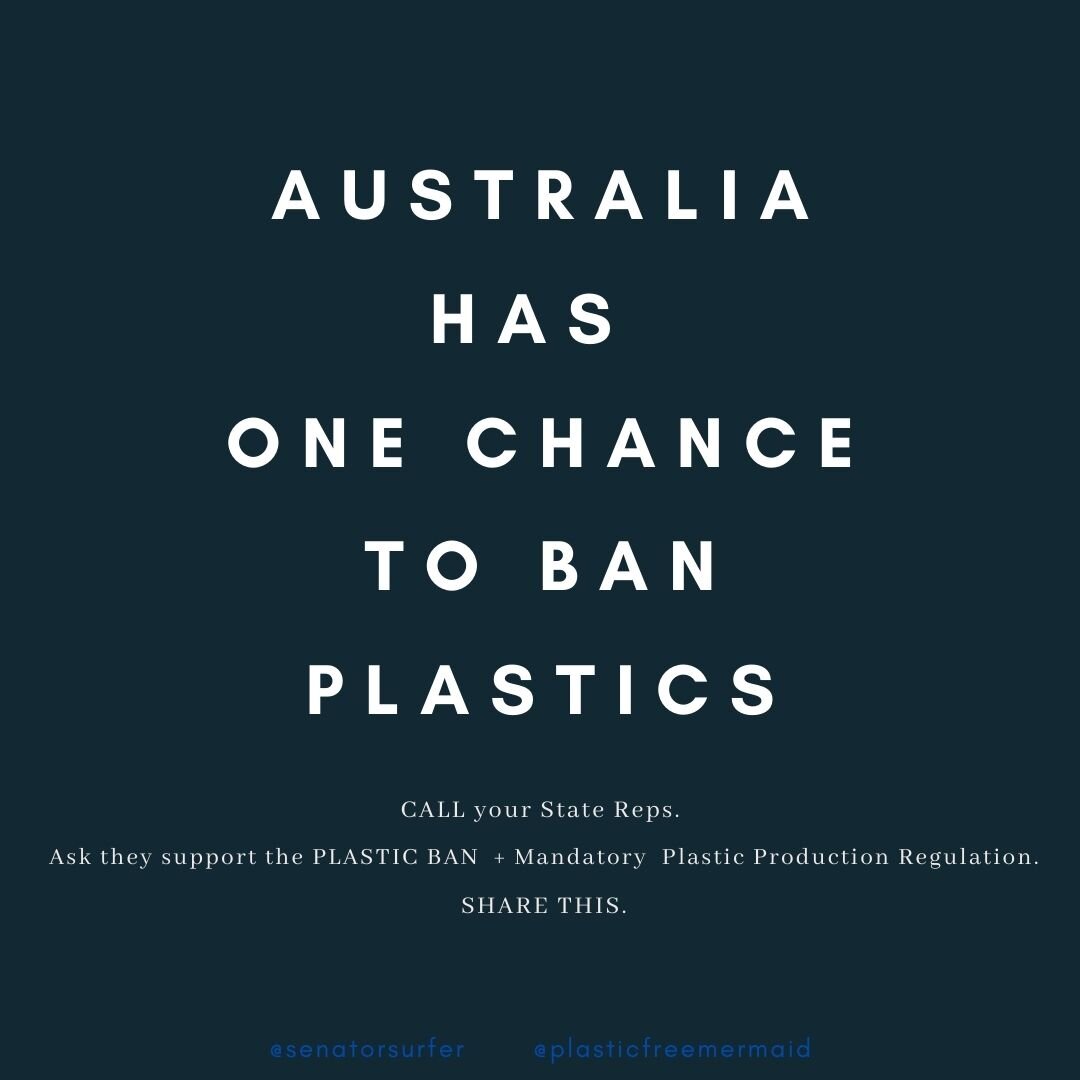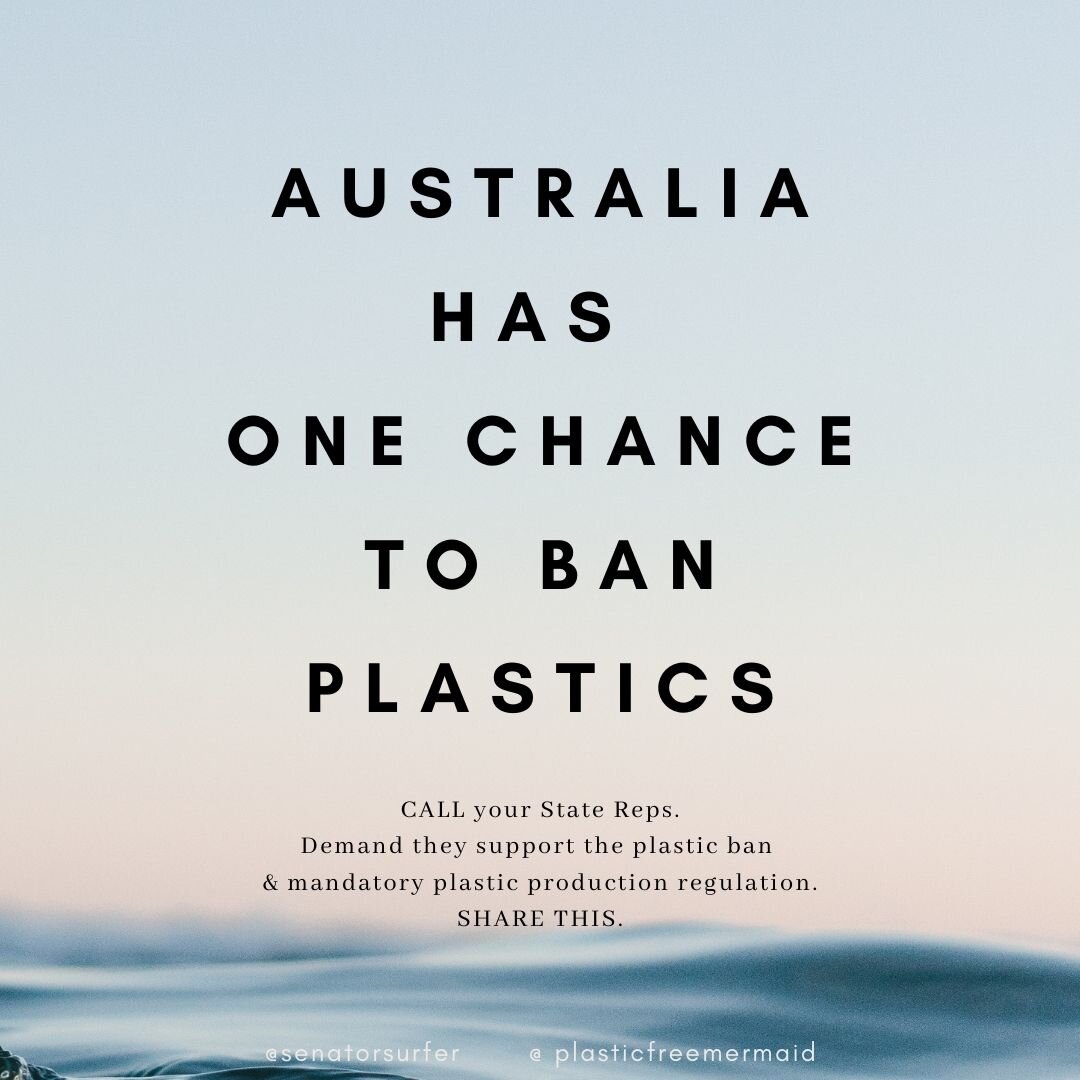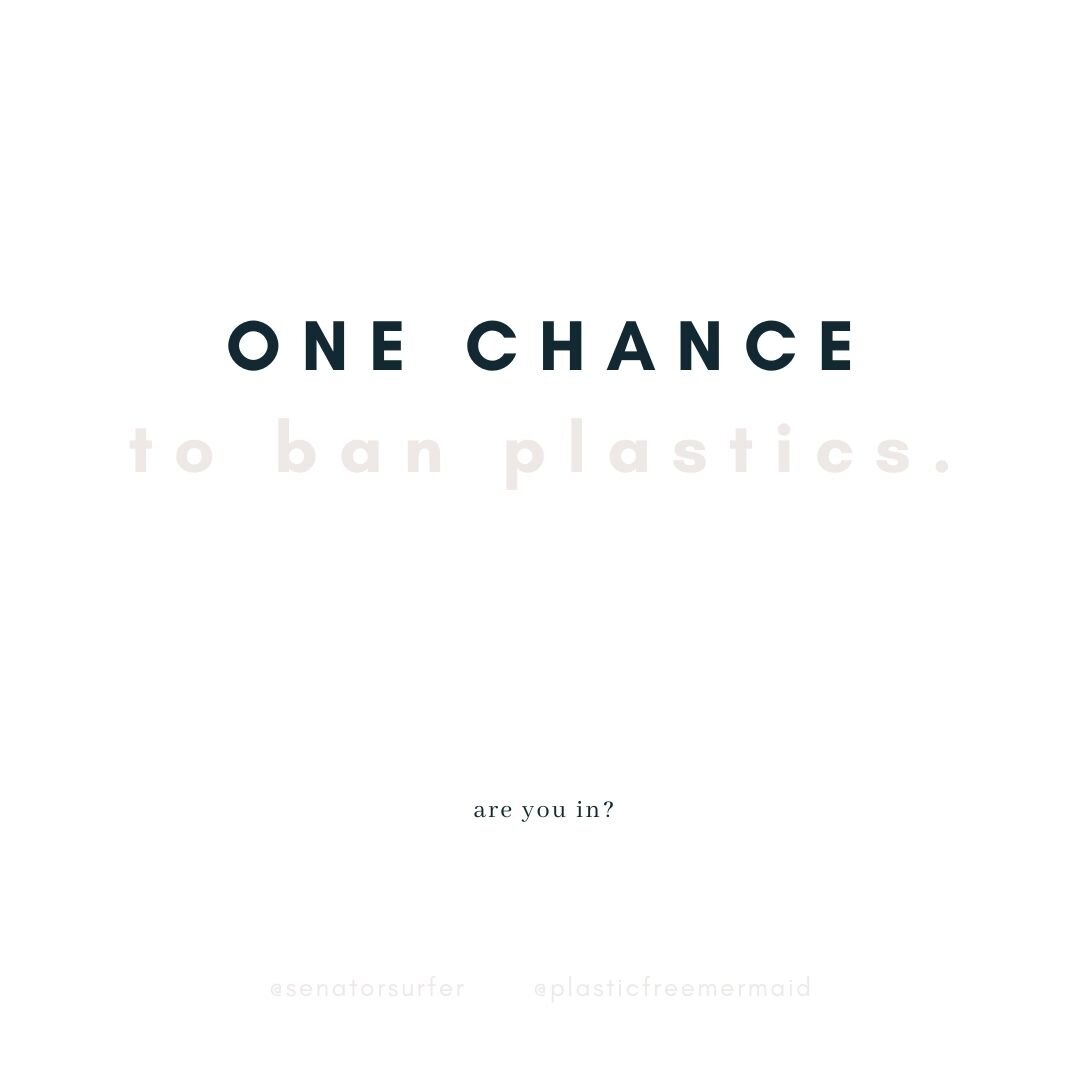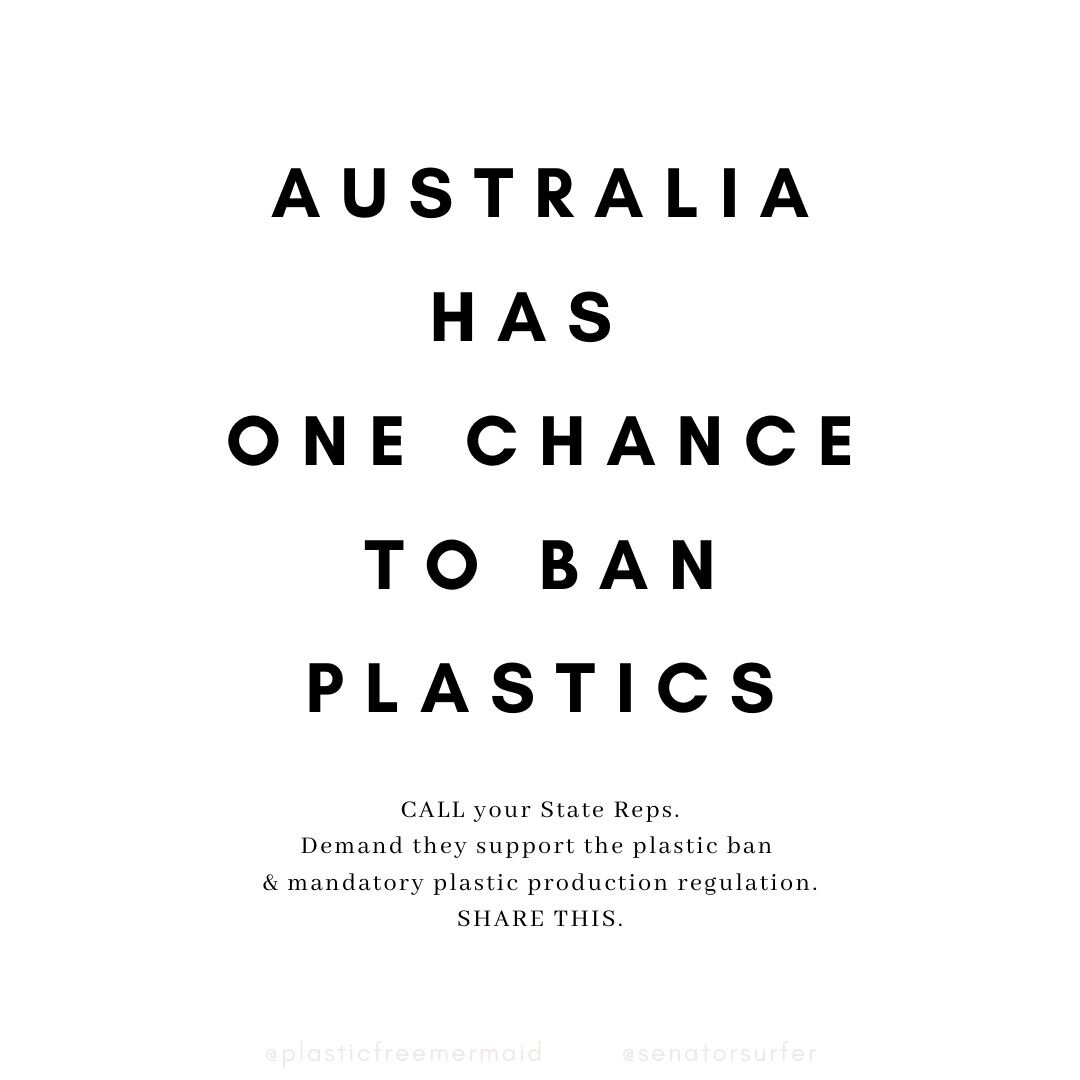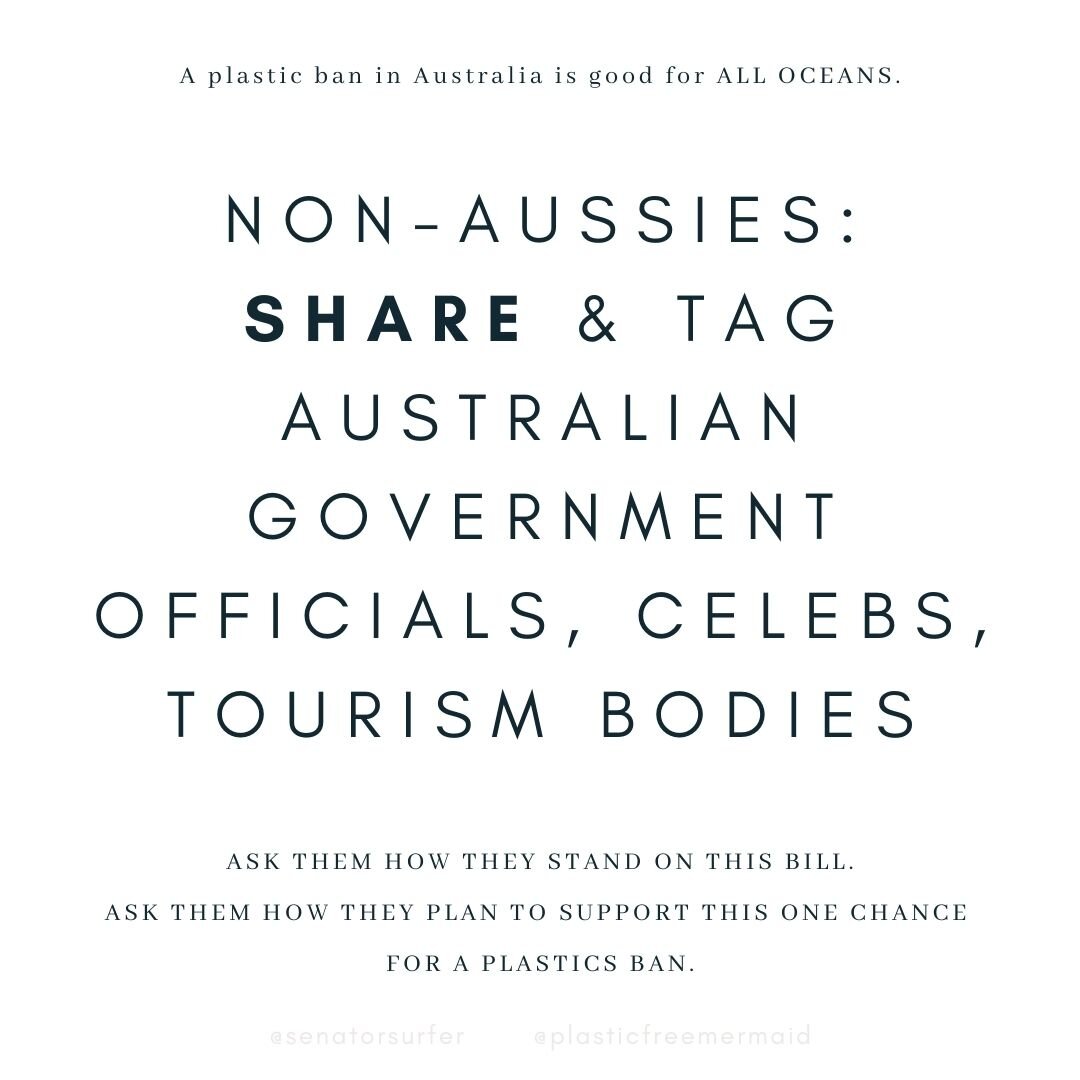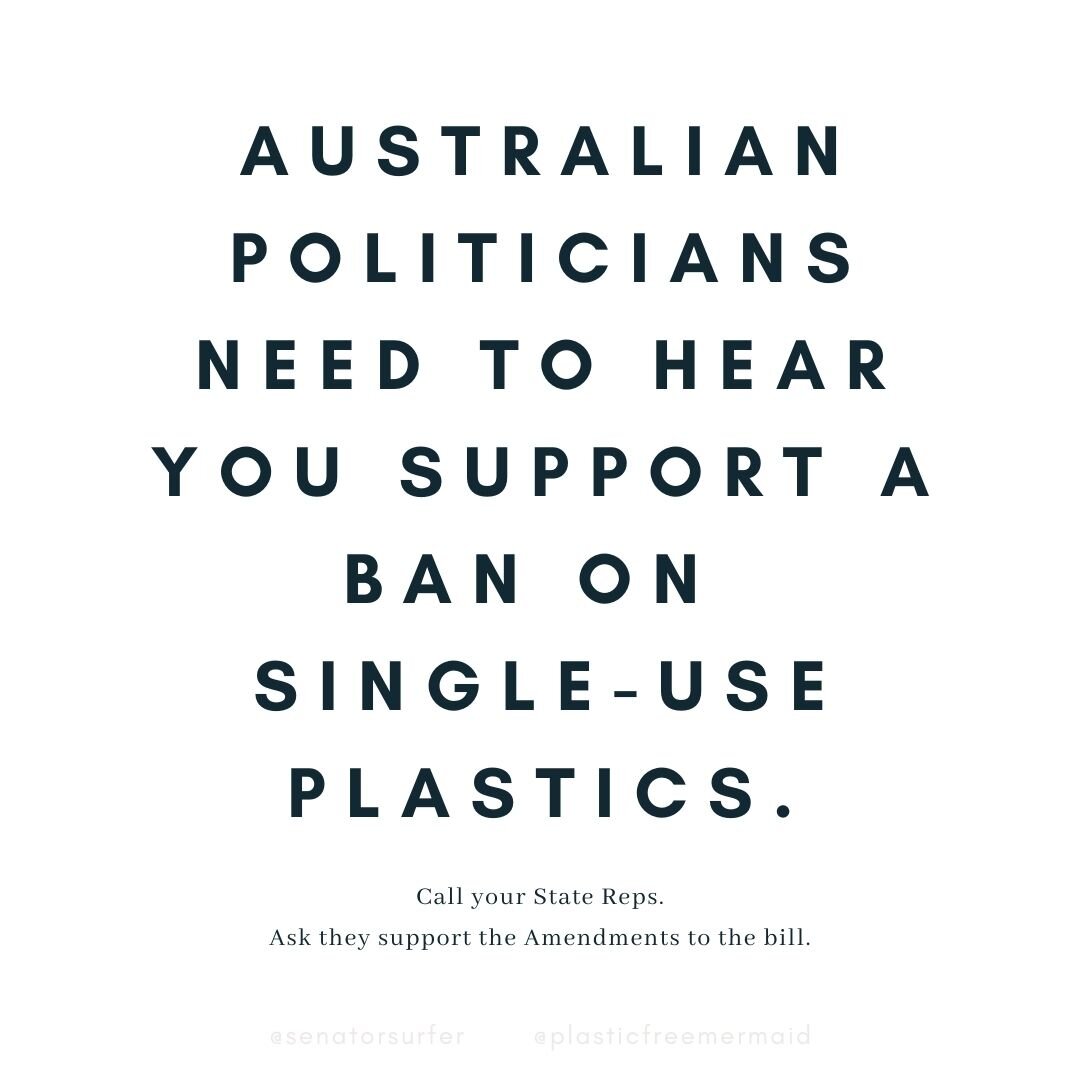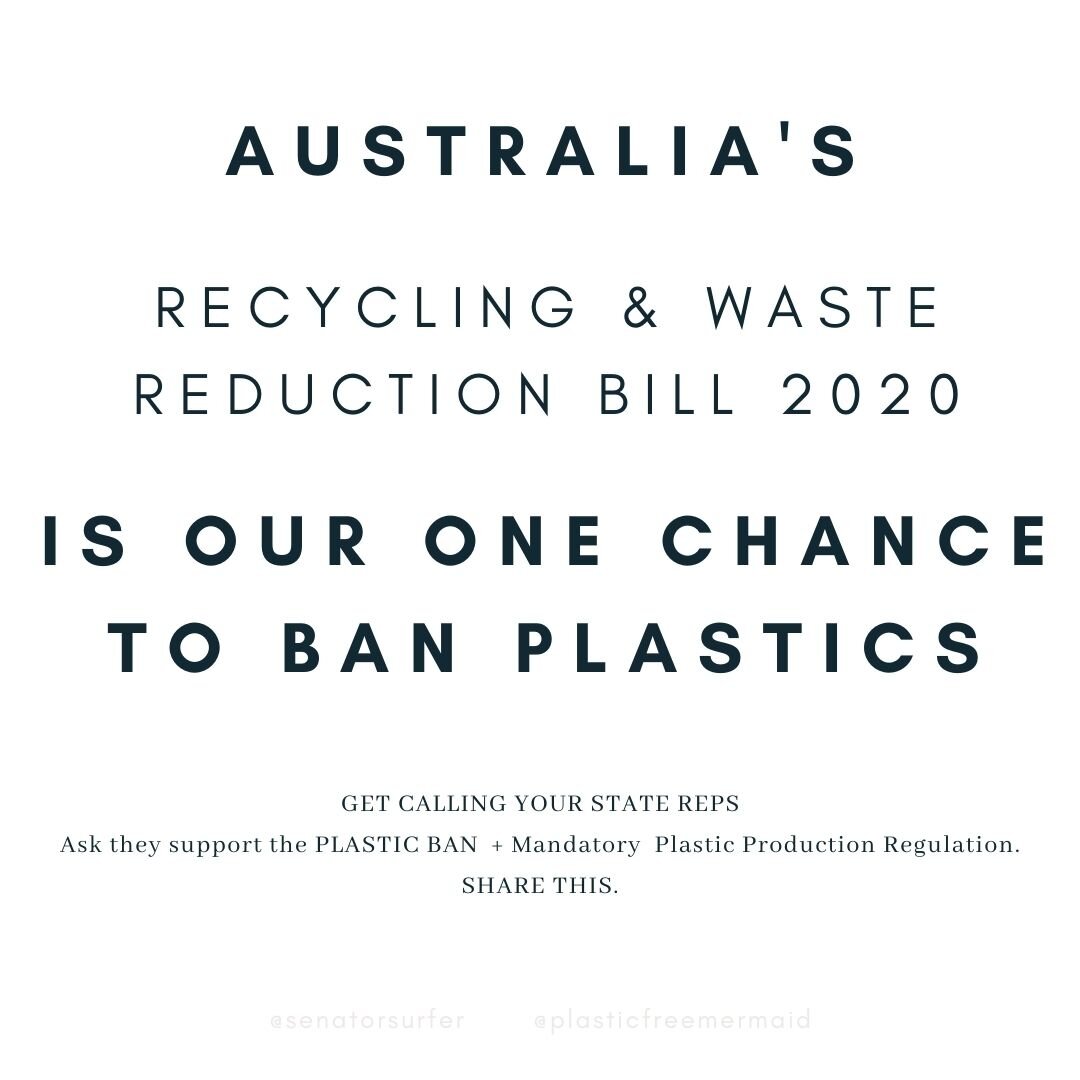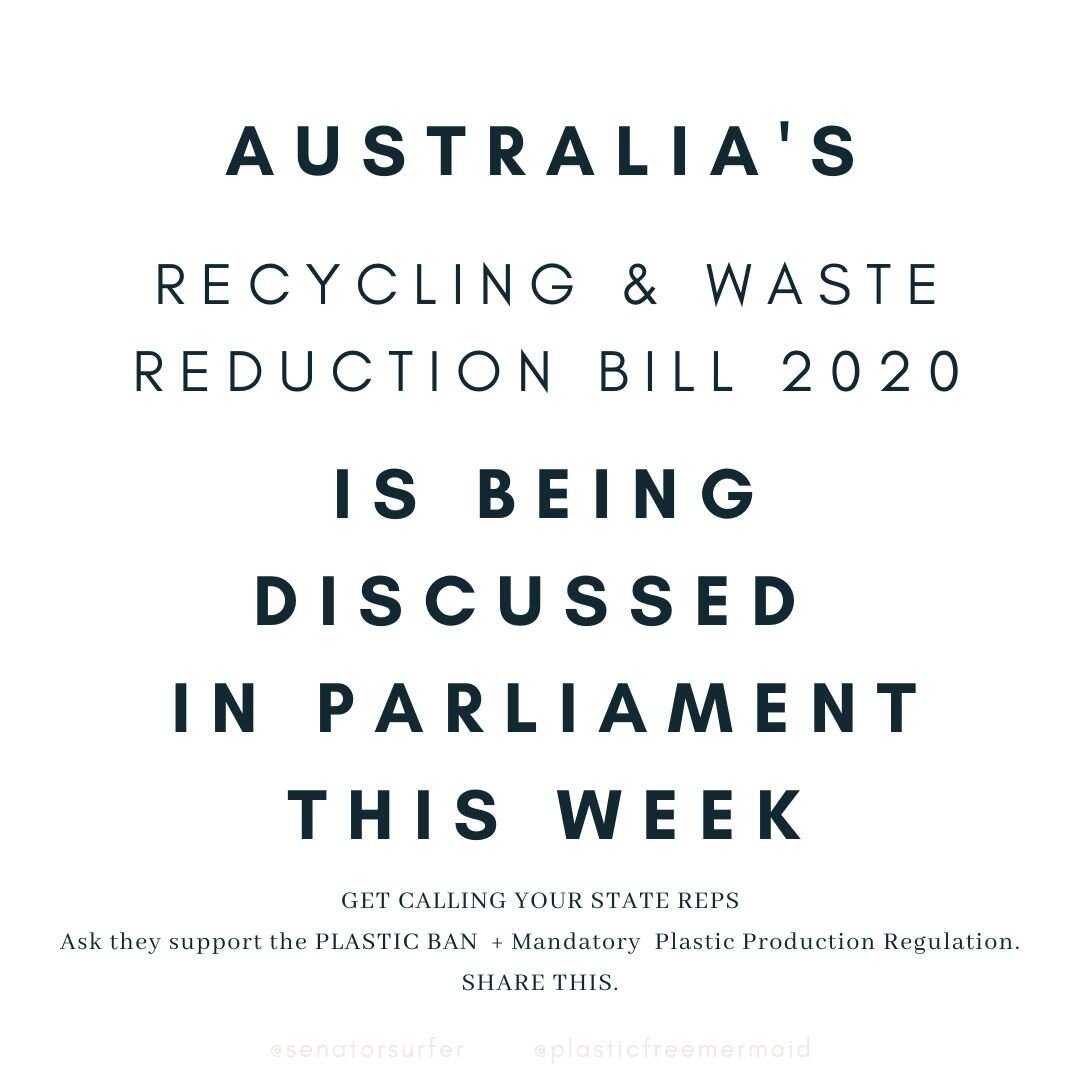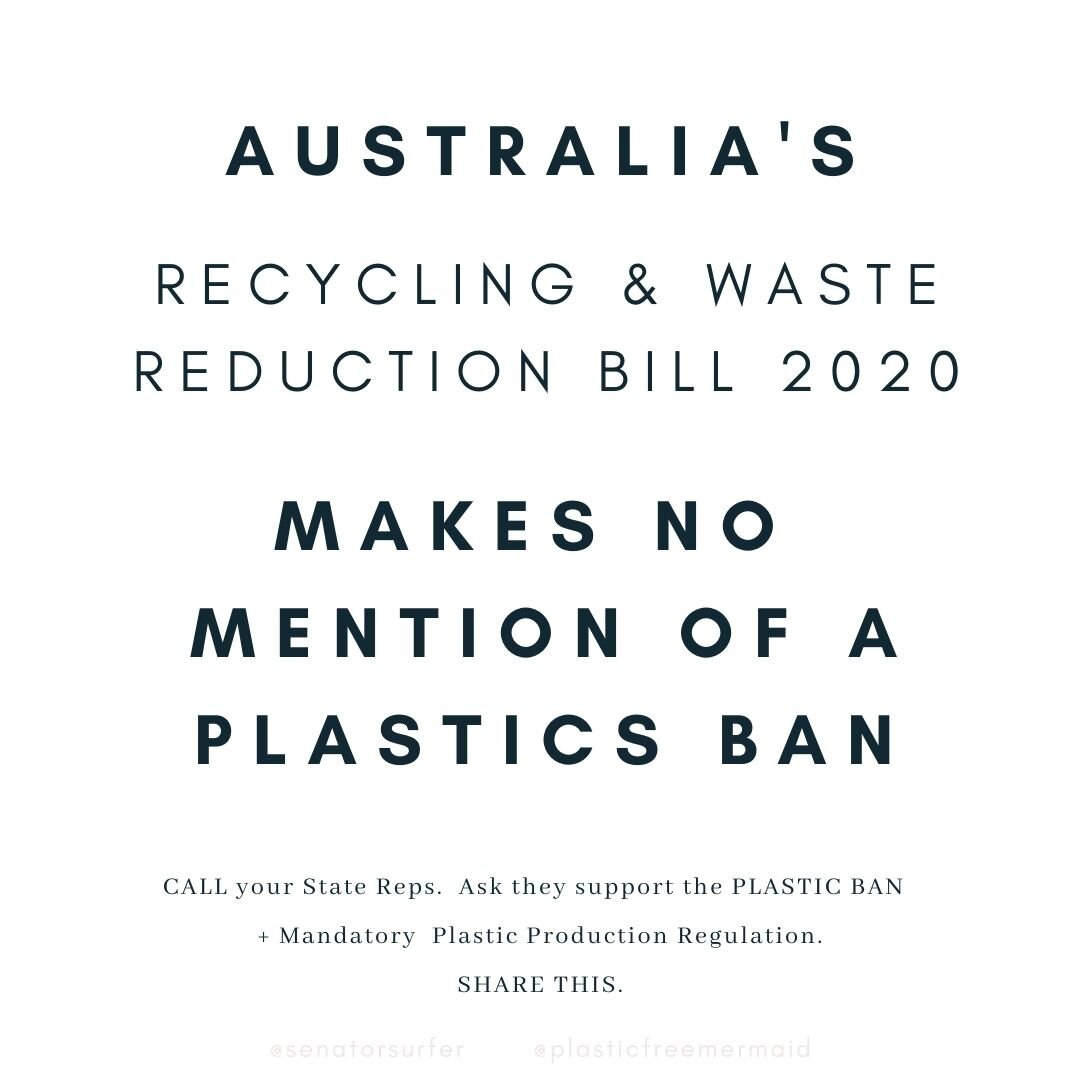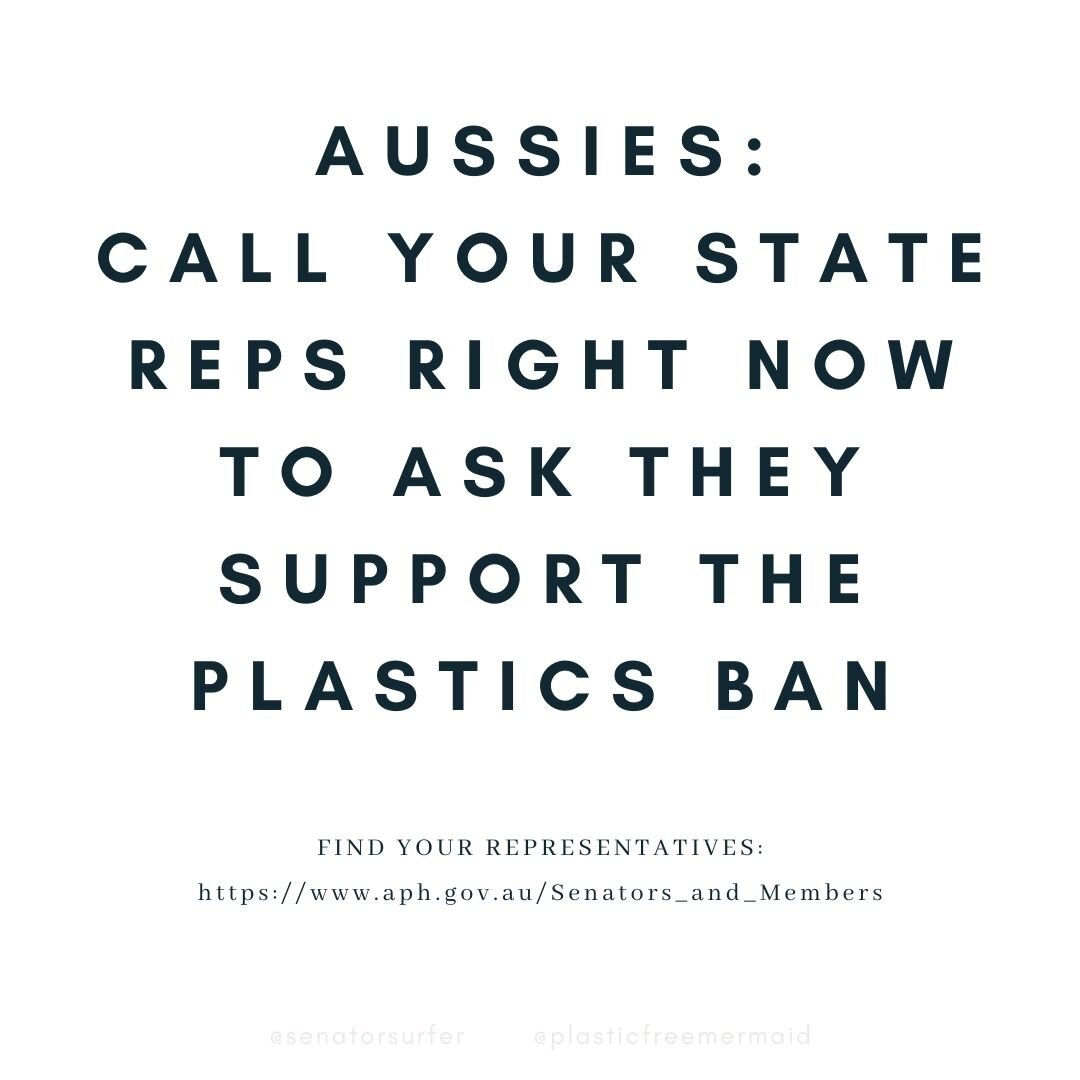AUSTRALIA COULD BAN PLASTICS
The Australian government is looking at a bill tomorrow (Thursday 7 October, 2020) that is titled and thus meant to tackle RECYCLING & WASTE REDUCTION.
It makes no mention of banning single-use plastics or regulating plastic packaging by large corporate manufacturers. If we are seriously looking to reduce our waste, these are two obvious measures that would have massive positive impact.
Fortunately, amendments including these asks will be submitted and discussed in Parliament.
THEREFORE WE HAVE AN OPPORTUNITY TO CHANGE HISTORY AND BAN PLASTICS IN AUSTRALIA.
ALL that Australians have to do is VOICE their support for these amendments by CALLING or EMAILING their state reps.
HOW:
Find YOUR State Reps: Put your postcode in here www.aph.gov.au/Senators_and_Members
Click on each Representative and find their Phone number or Email Address
CALL and say this: Hello, I am a constituent of Senator X and want to ask him/her/them to support the amendments to the Recycling and Waste Reduction Bill. Specifically I hope to see a ban on single-use plastics and mandatory targets and regulation for plastic packaging production.
EMAIL and write this:
Subject Line: Support Amendments to Waste Bill
Dear Senator/Member X,
As one of your constituents, I ask that you support the amendments to the Recycling and Waste Reduction Bill, which include a ban on single-use plastics (like the successful European Union ban) and mandatory targets and regulation for plastic packaging production.
(Optional Personal Touch : This is important to me because... I don't want our oceans to fill with unnecessary trash. It's time we take responsibility for our waste. I am frustrated to be given so much non-biodegradable packaging that becomes waste and want the government to take bold action on this.)
Research shows our oceans will be more full of trash than fish by 2050, so we need to see bold action by our government. We could certainly use some good news these days, so I hope you give us that good morale boost by pushing for these amendments to protect our oceans.
Sincerely,
NAME
ADDRESS
PHONE NUMBERSIGN this petition: https://greens.org.au/campaigns/ban-plastics
SHARE THIS! TALK ABOUT THIS! PUSH FOR CHANGE TODAY, so we can move on from all this plastic pollution nonsense!
It will take you 30-60 minutes to get through all 14 or so of your representatives. GO HARD. This is ONE MOMENT of your life, that could make history. Not only for the health of our oceans, for cleaner drinking water, for unpolluted air, but also to set a good example for the rest of the world.
Let’s do something to be proud of! Let’s ban plastics, Australia!
SHARE THESE!
Some Facts to Support banning plastics to use in your Communications:
CANADA banned single-use plastics. (2020)
EUROPE banned single-use plastics. (2019)
About 8.3 billion tonnes of plastic has been produced since the 1950s – the weight of roughly a billion elephants or 47 million blue whales. [1]
An estimated 9% of this plastic has been recycled, 12% has been burned creating toxic ash and air pollution, and the remaining 79% has ended up in landfills or the environment.[2]
Up to 12.7 million tonnes of plastic enters the oceans every year.[3]
The equivalent of a truckload of plastic enters the oceans every minute.[4]
There are five trillion pieces of plastic in our oceans – enough to circle the Earth over 400 times. [5-6]
Countries like Canada, the U.S., and the UK (aka the global north) export plastic waste to various countries in Asia and Africa, offloading their trash problem to other communities. This is no longer an option for Australia as these nations have increased standards and none of our contaminated materials pass, therefore we have to start sorting better and using less of the useless non-recyclable, mixed material plastics. [7-9]
Crustaceans tested at the ocean’s deepest point, Mariana Trench, had ingested plastic.[15]
Who is to blame for the plastic pollution problem?
Annual plastic production has skyrocketed since the early 1950s, reaching 322 million tonnes in 2015. This does not include synthetic fibers used in clothing, rope and other products which accounted for 61 million tonnes in 2016. It is expected that plastic production will continue to increase, likely doubling by 2025.[19]
Drink companies alone produce over 500 billion single-use plastic bottles annually.[20]
Well known coffee company Starbucks produces 4 billion coffee cups each year.[21]
Tens of billions of bags of chips are sold each year by companies like Pepsi Co.[22]
What are real solutions to plastic pollution?
Government bans and restrictions for unnecessary and damaging plastic products or activities. Legislative reuse targets.
Mandated Extended Producer Responsibility (EPR) regulations and strategies to make producers and companies responsible for the damage plastic causes to our environment, make them accountable for the entire lifecycle and true costs of their products.
Government and corporate investment in reuse models and new ways to deliver products using less or no packaging.
Corporate phase-out of production and use of single-use plastic products and throwaway product models.
A shift in dominant public mindsets away from our throwaway culture focused on convenience being equal to disposal, toward a vision of healthy, sustainable and more connected communities.
What are false solutions to plastic pollution?
Bioplastics – not as green as they seem, approach with caution. Though companies often market them under the same umbrella, a product is not necessarily biodegradable and may require very specific conditions to break down. They also do not solve the litter or throwaway culture problem.[23]
Incineration – creates other pollution and does not address the overproduction problem.[24]
Focusing on end of life like recycling or disposal – we can’t recycle our way out of this crisis.[25]
Clean up – while clean up efforts help reduce litter problems, they do not address the source of the problem and ignore the unseen plastic pollution – microplastics.[26]
Throwaway alternatives – replacing one single-use item with another does not necessarily solve the problem or help to address our throwaway culture.
Facts compiled by Sybil Bullock of Greenpeace, sources can be found in her article here.
